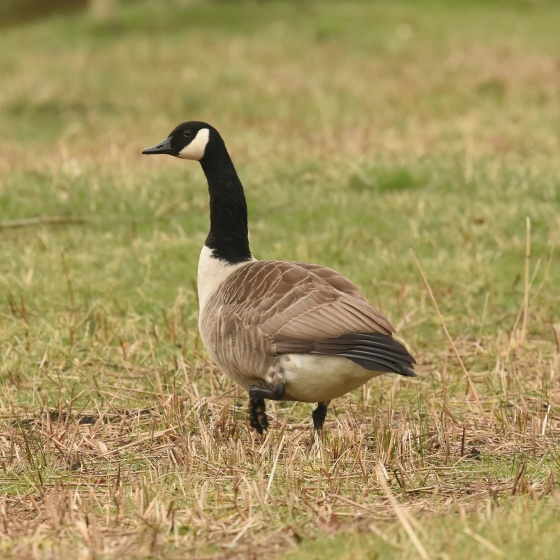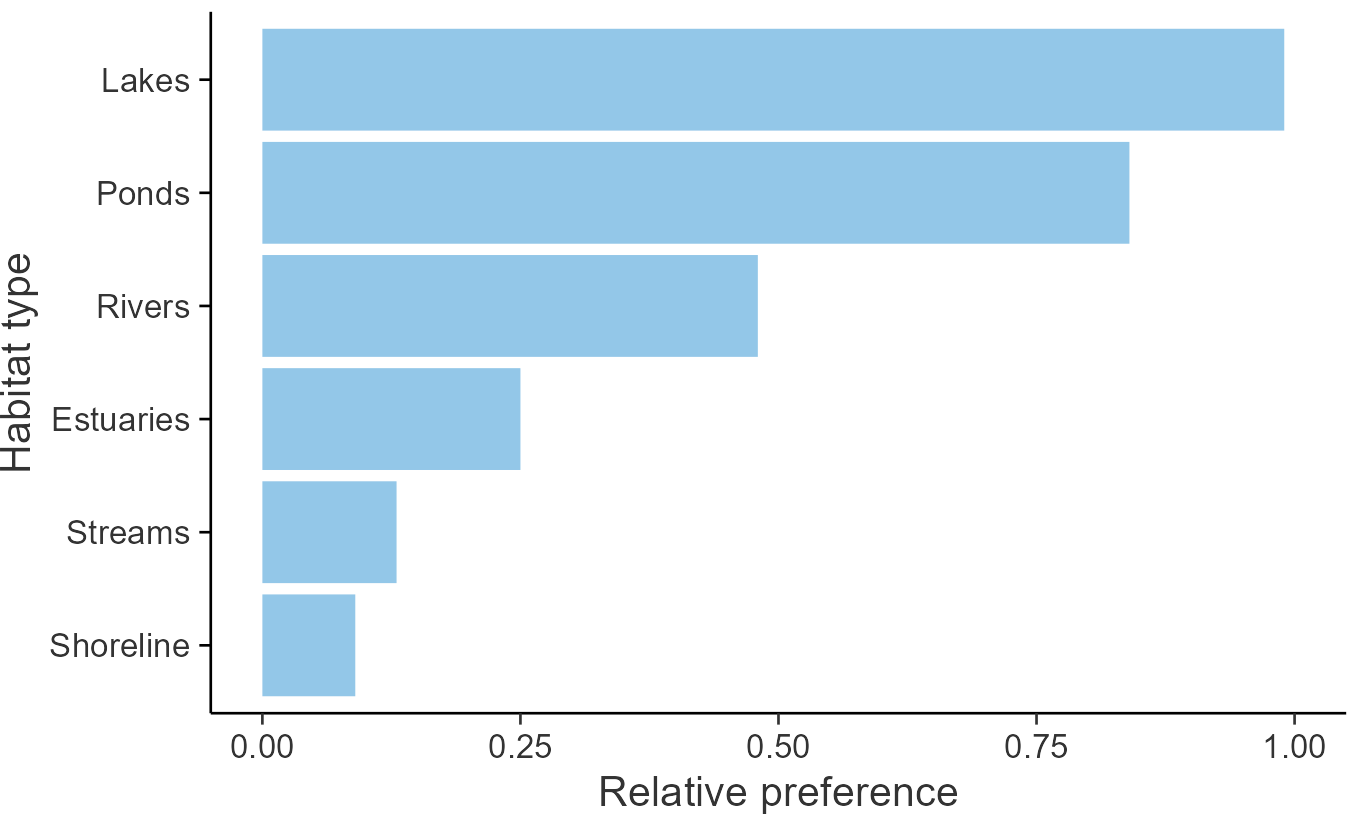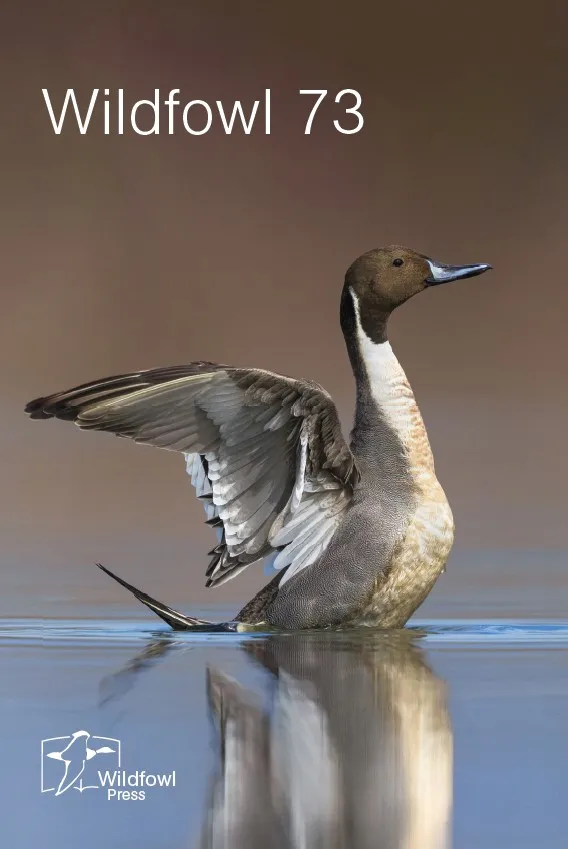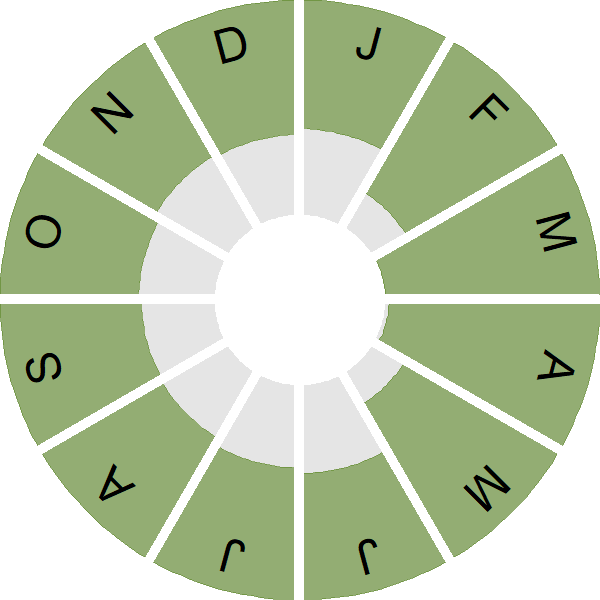Canada Goose

Introduction
This introduced species is now widespread across England and Wales, but has a somewhat patchy distribution in Scotland and is localised in Ireland.
Native to North America, the Canada Goose was first introduced to Britain in the 17th century. UK numbers have more than doubled since 1984, the result of predator-free nesting sites, good feeding opportunities and low hunting pressure.
While North American populations are highly migratory, those here are largely sedentary. However, many individuals make a significant moult migration to favoured sites, such as the Beauly Firth, where they complete their annual moult.
- Our Trends Explorer gives you the latest insight into how this species' population is changing.

Key Stats
Identification
Songs and Calls
Call:
Alarm call:
Flight call:
Status and Trends
Conservation Status
Population Change
Canada Geese were first introduced to English parkland around 1665 but have expanded hugely in range and numbers following translocations in the 1950s and 1960s. They increased rapidly, at a rate estimated at 9.3% per annum in Britain between the 1988-91 Atlas period and 2000, with no sign of any slowing in the rate of increase (Austin et al. 2007). Most of this increase, amounting to 166% during that decade alone, has been in areas previously with low goose densities. The WBS sample became large enough for annual monitoring in 1980, and shows that increases continued up to around 2012. Annual breeding-season monitoring in a wider range of habitats through BBS has shown similar strong increases in England and in the UK as a whole but also shows significant reversals over the last ten years. Winter monitoring shows a strong long-term increase, but a more shallow increase since about 2001 (WeBS: Frost et al. 2020). In Scotland, the population has increased from 119-194 in 1953, to 1,244 in 2000 and to a tentative figure of 3,000+ in 2015 (Bainbridge 2017). Expanding populations of geese, including non-native Canada Geese, are creating a number of economic, social and environmental challenges and, increasingly, adaptive policies are required to manage invasive goose populations in order to minimise and mitigate economic and environmental impacts (e.g. Reyns et al. 2018).
Distribution
The introduced Canada Goose can be found on a wide range of waterbodies throughout much of Britain, and locally in Ireland. It is rather sedentary in nature and as a result there are strong similarities in distribution and abundance patterns between winter and the breeding season. The species is widespread through England and Wales, being commonest through a broad band from southeast England to the Irish Sea and parts of northeast England.
Occupied 10-km squares in UK
2007/08–10/11
or view it on Bird Atlas Mapstore.
2008–11
or view it on Bird Atlas Mapstore.
European Distribution Map
Distribution Change
As populations have increased, the range has expanded westwards into Wales and southwest England, and northwards through eastern and northern England and central Scotland through to Argyllshire.
Change in occupied 10-km squares in the UK
from 1981–84 to 2007–11
or view it on Bird Atlas Mapstore.
from 1968–72 to 2008–11
or view it on Bird Atlas Mapstore.
Seasonality
Canada Geese are year-round residents, recorded on up to 20% of lists.
Weekly pattern of occurrence
The graph shows when the species is present in the UK, with taller bars indicating a higher likelihood of encountering the species in appropriate regions and habitats.

Habitats
Breeding season habitats
Relative frequency by habitat
The graph shows the habitats occupied in the breeding season, with the most utilised habitats shown at the top. Bars of similar size indicate the species is equally likely to be recorded in those habitats.

Movement
Britain & Ireland movement
Foreign locations of birds ringed or recovered in Britain & Ireland
Dots show the foreign destinations of birds ringed in Britain & Ireland, and the origins of birds ringed overseas that were subsequently recaptured, resighted or found dead in Britain & Ireland. Dot colours indicate the time of year that the species was present at the location.
- Winter (Nov-Feb)
- Spring (Mar-Apr)
- Summer (May-Jul)
- Autumn (Aug-Oct)

European movements
EuroBirdPortal uses birdwatcher's records, such as those logged in BirdTrack to map the flows of birds as they arrive and depart Europe. See maps for this species here.
The Eurasian-African Migration Atlas shows movements of individual birds ringed or recovered in Europe. See maps for this species here.
Biology
Productivity and Nesting
Nesting timing
Egg measurements
Clutch Size
Survival and Longevity
Survival is shown as the proportion of birds surviving from one year to the next and is derived from bird ringing data. It can also be used to estimate how long birds typically live.
View number ringed each year in the Online Ringing Report.
Lifespan
Survival of adults
Survival of juveniles
Biometrics
Wing length and body weights are from live birds (source).
Wing length
Body weight
Ring Size
Classification, names and codes
Classification and Codes
- Order: Anseriformes
- Family: Anatidae
- Scientific name: Branta canadensis
- Authority: Linnaeus, 1758
- BTO 2-letter code: CG
- BTO 5-letter code: CANGO
- Euring code number: 1660
Alternate species names
- Catalan: oca del Canadà
- Czech: berneška velká
- Danish: Canadagås
- Dutch: Grote Canadese Gans
- Estonian: kanada lagle
- Finnish: kanadanhanhi
- French: Bernache du Canada
- Gaelic: Gèadh-dubh
- German: Kanadagans
- Hungarian: kanadai lúd
- Icelandic: Kanadagæs
- Irish: Gé Cheanadach
- Italian: Oca canadese
- Latvian: Kanadas zoss
- Lithuanian: kanadine bernikle
- Norwegian: Kanadagås
- Polish: bernikla kanadyjska
- Portuguese: ganso-do-canadá
- Slovak: bernikla velká
- Slovenian: kanadska gos
- Spanish: Barnacla canadiense grande
- Swedish: kanadagås
- Welsh: Gwydd Canada
Research
Causes of Change and Solutions
Causes of change
There is little good evidence available regarding the drivers of the breeding population increase in this species in the UK. However, the initial rapid increases following introduction may have been aided by lack of intraspecific competition and the ability of this species to exploit a previously unoccupied habitat, before density-dependent effects began to occur.
Further information on causes of change
No further information is available
Information about conservation actions
As a non-native introduced breeding species, Canada Goose does not have a conservation status in the UK.
Following the increases, local and national conservation action and policies may instead be required to manage goose populations in order to minimise and mitigate economic and environmental impacts (Reyns et al. 2018). This could include policies such as culling and treating or pricking eggs to reduce breeding productivity. A Dutch study found that culling adult birds was more effective than egg pricking in reducing numbers of non-native Greylag Goose (van Turnhout et al. 2010); however culling as a means of control can be controversial (Shirley 2010); Frith 2010).
Publications (1)
Moult migration, site fidelity and survival of Canada Geese Branta canadensis caught at Lake Windermere, Cumbria.
Author: Brides, K., Wood, K.A., Leighton, K., Barbour, J., Petrek, S.W., Cooper, J., Vickers, S.H., Christmas, S.E., Middleton, J. & Grogan, A.
Published: 2023
01.12.23
Papers

More Evidence
More evidence from Conservation Evidence.com
Partners
Citing BirdFacts
If you wish to cite particular content in this page (e.g. a specific value) it is best to use the original sources as linked in the page. For a more general citation of the whole page please use: BTO (20XX) BirdFacts Species: profiles of birds occurring in the United Kingdom. BTO, Thetford (www.bto.org/birdfacts, accessed on xx/xx/xxxx).

